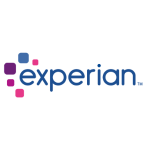- Products

Enjoy a free 30-day trial of our
data validation software.Experience the power of trusted data
solutions today, no credit card required! - Solutions

Enjoy a free 30-day trial of our
data validation software.Experience the power of trusted data
solutions today, no credit card required! - Partners

Enjoy a free 30-day trial of our
data validation software.Experience the power of trusted data
solutions today, no credit card required! - Learn more
- Pricing
- Contact Us
6 data furnishing best practices

Accurate data is a cornerstone in facilitating the credit reporting process. When lenders furnish information to the Credit Reporting Agencies (CRAs1), the CRAs then collect, store, maintain, and distribute consumers’ credit history.2 What’s most important, data furnishers and CRAs must comply with the Fair Credit Report Act (FCRA3) to ensure this is done with accuracy and integrity. When this doesn’t happen, reputation and customer satisfaction are at risk.
To help ensure data accuracy and integrity, it is critical to implement effective internal controls within the data furnishing process. Here are our top six industry best practices:
1. Outline furnishing policies and procedures
The foundation of a sound internal control structure is to have effective policies and procedures. These should be written and include all the key elements outlined in Appendix E.
2. Establish a three-way reconciliation
As files are generated and submitted it’s important to know what controls exist to ensure that the number of records being submitted to the CRAs is complete. Implement a reconciliation between the accounts on your servicing system, the number of accounts generated on the Metro 2® file, and the number of accounts accepted by the CRA. The key reconciling items should be known and expected. Reject reports, such as Experian’s Metric Report™, can be automatically delivered when reporting to Experian to help with this process.
3. Make sure there is quality control
Best-in-class companies will sample their Metro 2® file records and verify the accuracy of the information. This is done by evaluating the loan documentation associated, confirming that it matches source information, reviewing the mapping; which can be done by comparing the system field information to what is in the file and then comparing the result to the requirements as outlined in the CRRG©. The final step in the process is to obtain a soft pull of the tradeline from all CRAs and confirm it matches to the Metro 2® file. More sophisticated furnishers should also develop independent queries and obtain electronic data to perform this type of testing.
4. Perform data analytics
To assist in the analysis of Metro 2® data prior to furnishing data, organizations are leveraging data analytics platforms, such as Experian’s DataArc360™, to evaluate potential inaccuracies and incomplete data. The objective is to assist companies in identifying issues with Metro 2® files, such as invalid or retired values, illogical conditions, and missing fields, so that they can be flagged and evaluated based on the requirements of the CRRG©, as well as general business logic applicable to your business.
5. Manage oversight and reporting
It’s important to ensure adequate management oversight and reporting. This includes key furnishing trends—like counts of status, rejects, complaints, and key performance metrics such as daily disputes per FTE. The results of your quality control and status of key initiatives should also be included in the management reporting.
6. Upgrade technology to improve efficiency:
Advanced technology such as artificial intelligence (AI), reverse phone append (RPA), and optical character recognition (OCR) continues to evolve, and organizations are deploying this technology to reduce furnishing risks. For example, running artificial intelligent segmentation analysis to analyze dispute trends and drivers, and even pull information both typed and handwritten off documents. This information is then further analyzed.
High-quality credit data starts with the Metro 2® format and strong policies and procedures. With reliable consumer data and accurate credit reporting, financial institutions can deliver a personalized customer experience while minimizing risky loans, mortgages, and credit cards, remaining within compliance, operating efficiently, and most importantly, staying ahead of competitors.
Learn how you can uphold data accuracy and integrity while complying with FCRA in our most recent white paper.
Sources:
1 15 U.S.C. § 1681 et seq. The FCRA’s provisions are sections 601-629 of the Consumer Credit Protection Act and are commonly cited by those section numbers.
2 The national Credit Reporting Agencies consist of Experian, Equifax, Transunion and Innovis.
3 Title II, Subtitle D, Chapter 1, of the Omnibus Consolidated Appropriations Act for Fiscal Year 1997 (Pub. L. No. 104-208, Sept. 30, 1996).



